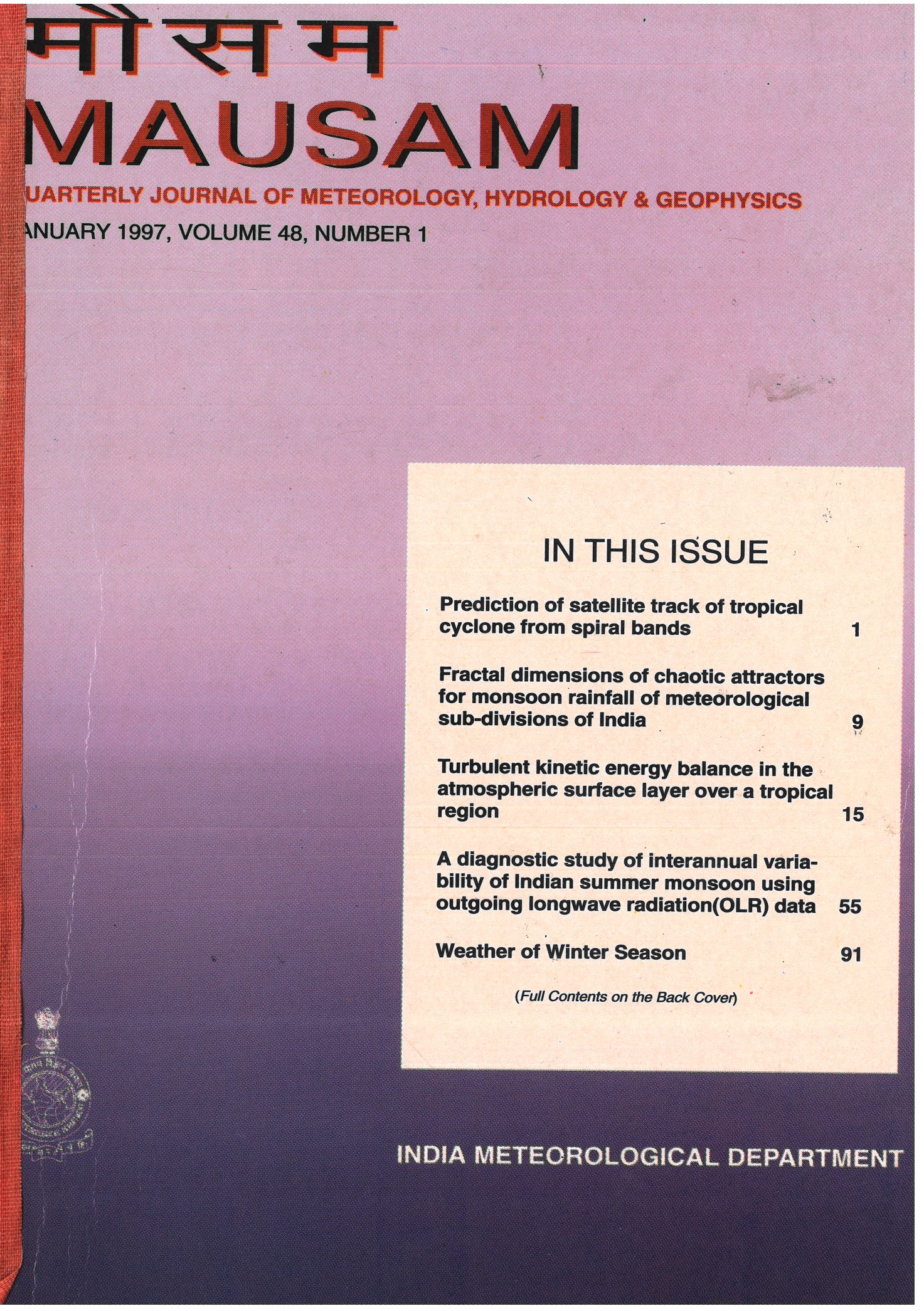Climatic impact on atmospheric turbidity at some Indian stations
DOI:
https://doi.org/10.54302/mausam.v48i1.3827Abstract
Data from four Indian BAPMoN stations in different climatic regions were analysed using principal component analysis (PCA) for the evaluation of climatic impact upon turbidity. Spectral analysis (FFT) of the data for these stations has helped to bring out the sub-seasonal, seasonal and annual cycles. It is found that the atmospheric turbidity is predominantly controlled by climatic factors through surface fluxes, transport of dust or rain washout and is mainly a lower tropospheric phenomenon. The performance of the PCA regression model is found satisfactorily in reproducing the annual cycle and long period variations.
Downloads
Published
How to Cite
Issue
Section
License
Copyright (c) 2021 MAUSAM

This work is licensed under a Creative Commons Attribution-NonCommercial 4.0 International License.
All articles published by MAUSAM are licensed under the Creative Commons Attribution 4.0 International License. This permits anyone.
Anyone is free:
- To Share - to copy, distribute and transmit the work
- To Remix - to adapt the work.
Under the following conditions:
- Share - copy and redistribute the material in any medium or format
- Adapt - remix, transform, and build upon the material for any purpose, even
commercially.



